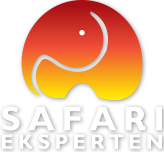The Namib Desert
South western Namibia is totally dominated by the Namib Desert. The majority of the desert is under the protection of the Namib -Naukluft Park, which covers 6% of the whole country, some 50,000km2, which makes it the largest park in Africa and one of the very biggest national parks in the world. The most famous part of the park is the area close to Sesriem in its east, some 300km south of the capital Windhoek, and in particular Sossusvlei and Deadvlei, where there are a spectacular series of often dry flood plains. Here you can see some of the world’s highest sand dunes, a beautiful orange-red in colour, and over 300m high. You can reach here in the parks specially built vehicles, and after you have been “let loose” you can explore the huge dunes on foot to find the perfect spot to take the ultimate desert picture. The very best time to do this is in the early morning, when you can see the sun rise over the desert and enjoy the spectacular “light show”, when the deep shadows are replaced by the soft, golden morning light. If you have both the desire and energy, walking to the top of one of the dunes will give you an incredible view, but it is hard walking up the loose sand, even in the morning when the temperatures are still cool.
It is not surprising that the animals are not common in this harsh environment - perhaps more surprising is the fact that you can find animals here at all, but some specialised animals that are highly adapted to the arid conditions such as the gemsbok and ostrich thrive here, and despite everything plants can still be found sparsely distributed around the desert. Further north the sands of the desert of the park are replaced by stones and gravel, and plant life becomes more frequent. Here you can see more animals, such as springbok and the rare Hartmann’s mountain zebra, which can only be found in western Namibia and southern Angola, and is southern Africa’s largest zebra. Here who can also find baboons, living in the driest conditions that any species of ape are found anywhere. The most common of the few predators that live here is the caracal, but occasionally a leopard may also be seen in the area. The vegetation is also highly adapted to the extreme environment, perhaps the unusual Welwitschia is the most thoroughly adapted of all. It resembles a half withered collection of long, frayed leaves, although in fact there are only two, and despite its dishevelled appearance, it can grow to 2,500 years of age. The desert stretches all the way to the Atlantic Ocean coastline, but access to the coast is limited. It is most easily done from the towns of Walvis Bay and Swakopmund in the north west of the park. Large areas of the most southern section of the park are closed and can only be visited if you have a special permit.
Highlights:
- Huge orange-red sand dunes close to Sossusveli, particularly beautiful in the early morning light
- See the beautiful animals of the desert cross the naked dunes in their search for food.
- The more numerous desert adapted plants and animals of the park’s northern stone and gravel landscapes
High Season: June to March
These attractions can be seen on the following tours
















